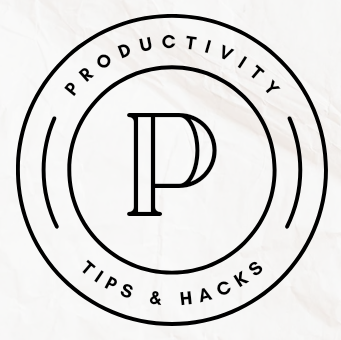
The Pomodoro Technique is a very popular time management method in the productivity world. Due to its immense popularity, many people are curious to know exactly what is the Pomodoro Technique and whether it works.
In this article, we are going to find out more about this technique.
What Is The Pomodoro Technique?
The Pomodoro Technique is a straightforward time management method which started in the late ’80s thanks to Francesco Cirillo.
It involves
- breaking your work into 25-minute chunks, each called a ‘Pomodoro,’
- with a quick break in between.
In each of these 25-minute sessions, the goal is to put your full attention on a single task.
This means strictly no wandering off or peeking at your phone.
It’s all about zeroing in on what you’re set to achieve.
This focus not only hones your concentration but also makes sure that there’s less room for distractions.
Tracking how many Pomodoros you knock out is key.
By keeping count, not only do you get a clear picture of how long specific tasks take, it also helps you to estimate time better and giving you a little productivity boost.
The in-between breaks which the Pomodoro Technique includes is crucial to make sure you remain effective and reduces burnout.
Burnout is a real deal, and it sneaks up when you’re not looking. The built-in breaks come into play, acting like mini refresh buttons.
By slotting those regular pauses into your routine, you fend off the mental fatigue and keep your energy bar full throughout the day.
It is important to note that the Pomodoro Technique isn’t set in stone.
Feel free to tweak the intervals to fit your style and rhythm.
Maybe you’re in the groove for longer, like 50 minutes instead of 25 minutes. Customize it till it clicks perfectly with your work vibe.
How the Pomodoro Technique Enhances Productivity
The Pomodoro method isn’t just about keeping track of the time; it’s about making the most of your focus time.
When you set clear boundaries with these timed sessions, you enter a zone of deep, uninterrupted work.
It’s like putting on soundproof headphones for your mind, where distractions are gently nudged to the side.
Having the expectation that a break is approaching can work wonders if you have the tendency to procrastinate.
It makes the workload feels less like a mountain and more like a series of manageable hills, each capped with a well-earned pause or break.
This relief which comes from having breaks can spur you to start tasks you might usually push off.
Then there’s the beauty of managing distractions. Do you often have the urge to check messages?
Well, you can jot down this thought for later and stick with the task at hand first.
By parking those distractions for later, you stay in the moment rather than jumping around.
With each Pomodoro, you build a sharper sense of time.
You begin seeing how long things truly take and this enables you to adjust your planning accordingly.
This brings about bringing clarity to time management.
Getting through each Pomodoro gives a little feeling of triumph.
These mini victories can keep you motivated and inching forward, one task and one timer at a time.
Evaluating the Effectiveness of the Pomodoro Technique
Research generally backs the effectiveness of the Pomodoro Technique, suggesting that working in short, focused bursts with breaks can boost productivity and reduce the mental drain.
It’s got this magic mix of keeping your brain engaged yet rested.
The Pomodoro Technique is perfect for those tasks where concentration is key, such as writing or coding.
The advantage of this method lies in its flexibility. You can adjust the timing to perform tasks and breaks according to your schedule, work requirements as well as what duration works best for you.
The Pomodoro Technique suggest the traditional 25-minute sessions, but feel free to stretch or trim this timing depending on the nature of your task or even your mood for the day.
It’s about customizing while still keeping the essence of breaking work up with breaks.
However, some people feel that there is a disadvantage, that is while you are so focus on performing your tasks, the timer might suddenly sound, tellling you that it is time for a break.
To some poeple, this can be potentially disrupting while you are having deep work sessions.
Thus, it’s a good idea to weigh how strict adherence to the timing fits with your flow and rhythm and customize it accordingly.
However, if you like a structured day, the Pomodoro Technique can bring that order.
But if rigidity cramps your style, tweak it according to their needs.
Remember, the tool is meant to serve you, not the other way around.
Best Practices for Implementing the Pomodoro Technique
Getting the most out of the Pomodoro Technique involves a bit of finesse.
To start, focus on task prioritization.
Breaking bigger tasks down into manageable Pomodoros makes them feel less daunting and keeps the momentum going.
By chunking tasks this way, you maintain focus without feeling overwhelmed.
Adjusting the length of your Pomodoros is of another great importance.
Some folks find that longer sessions work better for them, while others might need shorter bursts to handle their distractions.
Do experiment with different durations to discover what suits your concentration span best. Do remember that everyone os different.
Having breaks is a non-negotiable part of the technique. 
Use these break intervals to recharge effectively. Stand up, stretch, hydrate, or just let your mind wander for a bit.
Anything that helps keep your energy levels high for the next round is a good idea.
Lastly, do remember that the goal is not just to get work done but to do it in a way which is sustainable.
Keeping tabs on both your work and recovery will help you achieve a balanced workflow.
This approach is especially helpful if you tend to procrastinate or have trouble maintaining focus.
Is the Pomodoro Technique Right for You?
Before you dive headfirst into Pomodoros, take a step back and identify your personal productivity hurdles.
Are you easily distracted, struggling with procrastination, or losing track of time?
Understanding these challenges is key to knowing how the Pomodoro Technique can fit into your routine.
If you find that you need a bit more flexibility, it’s all about tweaking the method to meet your needs.
Feel free to adjust the timing or even the tasks during each Pomodoro cycle.
The beauty here is in the adaptability—it’s your workflow, so it should be tailored by you.
Balancing this new structure with your natural work rhythm ensures that you’re not just forcing a fit.
Sometimes, people find blending a bit of structure with a dash of spontaneity gets things moving more smoothly.
You want those Pomodoros to work with you, not against you.
To Conclude…
Ultimately, whether this technique will work for you depends on how well it aligns with your personal work style.
Like any tool, its effectiveness lies in how you wield it.
So give it a try, see what works, and keep tweakin’ until you find that sweet spot for maximum productivity.
If you have any questions or anything to share about the Pomodoro Technique, feel free to let me know in the comments below. I would love to hear from you!
Thank you for reading.

Hi Lynz,
I’ve actually tried using the Pomodoro Technique myself, and it’s been pretty helpful for staying focused during my busy workdays. Breaking tasks into 25-minute chunks makes everything feel way more manageable. I used to get overwhelmed by big projects, but with Pomodoros, it feels like I’m just climbing small hills instead of a huge mountain. Also, knowing I have a break coming up helps keep me motivated. I even use the breaks to stretch or grab a quick snack, which keeps my energy levels up throughout the day.
That being said, I’ve also tweaked the technique a bit. Sometimes 25 minutes feels too short, especially if I’m really into what I’m doing. So, I’ll push it to 40 or 50 minutes depending on my flow. It’s all about finding what works best for me.
Hi macfais9,
Thank you so much for sharing your experience!